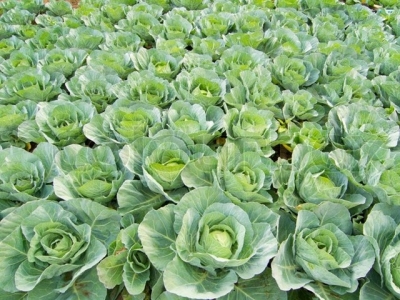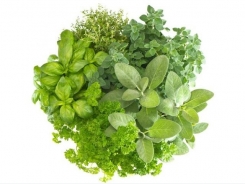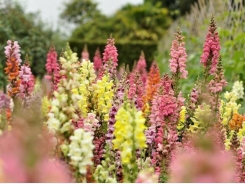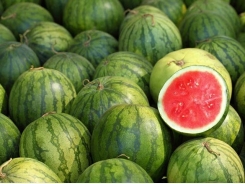Veggies boost the bottom line

By including vegetables in their diversified farming business the Mongs have been able to make better use of machinery and labour already at their disposal, thus lowering the fixed input cost for each division. Denene Erasmus reports.
The Mongs, who own and run the PP Mong Trust farming business based on farms situated in the Overberg region between Caledon and Villiersdorp, are well known in livestock circles for breeding top Dohne Merinos and Herefords. But their newest venture, vegetable production, has proven equally successful and has helped improve the farm balance sheet.
Filling the gap
Bertus Mong farms with his two sons, Pieter-Paul and PJ. He says that the business, which has five different divisions, is based on diversification that allows them to increase profitability. This helps to lower fixed input costs for each of the divisions by making more productive use of resources such as machinery and labour. It was only about three years ago that PJ, who is in charge of vegetable production, really started expanding this aspect of the business.
PJ Mong is in charge of the vegetable division of PP Mong Trust.
After completing his studies at Elsenburg Agricultural College, where he excelled in vegetable production, he joined Bertus and his older brother on the farm in 2007. “Our interest in expanding vegetable production on the farm was first sparked when we realised that whereas the population of the Cape Peninsula had been growing every year and with this the demand for fresh produce, the traditional vegetable basket of the Cape Town area, Philippi, was getting smaller and smaller,” says Bertus.
The farmers of Philippi on the Cape Flats still produce a significant percentage of vegetables consumed in and around Cape Town. But because of the location of these farms, urban encroachment, and crime, the number of farmers decreased over the past few years.While the sustainability of farming in the Philippi area becomes increasingly uncertain, farmers like the Mongs (85km out of Cape Town) are filling the gap in the market.
“The vegetables are by no means our main farming division, but it has become an important part of our business and a welcome source of additional income,” says PJ. “We are already planning on expanding production even further.”
Diversification
Farming operations consist of 300ha of crops under irrigation which includes about 40ha of pasture grazing, 30ha of vineyards, 30ha of vegetables and 200ha of fruit (apples, pears and nectarines). The Mongs also grow grains (wheat, barley, oats and triticale) and run livestock on 800ha. “The vegetables started as a very small part of the business.
We used to grow only about 3ha of vegetables, but we realised that we could increase production without increasing our fixed farm input costs by integrating vegetables in such a way that we use the same people and machinery used on the rest of the farm to produce vegetables.
On their farms in the Overberg the Mongs have access to clean water, good quality soil and an unlimited supply of fresh air, so the vegetables produced here are of excellent quality.
“We already had all the machinery, the labour and the storage and packaging facilities we needed. All we had to spend on was the direct input costs and by careful planning and marketing we could make a good profit from the vegetables,” says PJ. Within two years they expanded vegetable production to roughly 15ha of onions, 15ha of cabbage and 5ha of pumpkin on a rotational basis. Now the vegetables form a small, but profitable part of the larger business puzzle and income from vegetables sold account for close to 10% of the total farm turnover per year.
Crop rotation
The vegetable rotation cycle enables them to harvest and market vegetables during most months of the year. The first cycle starts in September when they plant the onions. They are harvested in January and then stored in wind tunnels until later in the year when the supply of fresh onions in the market starts dwindling. “We market the onions from April through to August because we can earn at least twice as much for onions marketed later in the year compared to onions marketed close to harvest time.
“During harvest time we can get between R16 per packet and R18 per packet, but later in the year, prices go up to between R30 per packet and R38 per packet,” says PJ. One of the ways in which they are lowering input costs on onions is by producing their own seed and seedlings. The onion seed is planted during May to produce the seedlings that are then replanted in September.
“After the onions have been harvested, the lands are cleaned and in February we plant cabbage. To ensure that we have a steady supply of fresh cabbage for a long period of time (a long harvest season), we plant about 1,5ha every 14 days,” PJ explains.
The cabbages are harvested from the end of April until the end of August. “We harvest between 40t and 60t of cabbage every week. The average weight of one head of cabbage produced on the farm is 5kg, which means we harvest about 9 000 cabbages every week,” says PJ.
Irrigation and fertilser
To prevent diseases that could cause damage to the crops, PJ follows a very thorough soil sanitation process before planting a new batch. After each harvest, all the plant residue is removed from the soil mechanically by a tractor-drawn blade and the soil gets ripped at 50cm deep. He ascribes the excellent quality of the vegetables to good production management, which includes following an ideal fertiliser programme as worked out by a specialist.
“Before we plant onions we do soil corrections by applying a gypsum fertiliser (calcium sulphate) and a KCL fertiliser (potassium chloride) as necessary, according to soil analysis. At planting, the onion seedlings receive NPK (nitrogen, phosphorus, and potassium) granular fertiliser.
‘‘We apply equal measures of each amounting to 44kg/ha of each and then about seven top-dressings during the growth period that adds up to a further 182kg/ ha nitrogen, 91kg/ ha phosphorus and 162kg/ ha potassium in the season. For the cabbage they apply an NPK granular fertiliser at planting consisting of equal measures of 50kg/ha each. “We also apply about six top-dressings during the growth period that adds up to a further 188kg/ ha nitrogen, 74kg/ ha phosphorus and 194kg/ ha potassium in the season,” says PJ.
The vegetables are under permanent irrigation. Irrigation scheduling is done by using DFM probes (a continuous logging soil moisture probe). “We get good results by using a shorter but more regular irrigation cycle,” he says. They follow a preventative spraying programme for pests and disease that was worked out for them by a specialist working for Nexus.
Related news
Tools

Phối trộn thức ăn chăn nuôi

Pha dung dịch thủy canh

Định mức cho tôm ăn

Phối trộn phân bón NPK

Xác định tỷ lệ tôm sống

Chuyển đổi đơn vị phân bón

Xác định công suất sục khí

Chuyển đổi đơn vị tôm

Tính diện tích nhà kính

Tính thể tích ao




 How to Grow Peas
How to Grow Peas  How to Grow Watermelon
How to Grow Watermelon